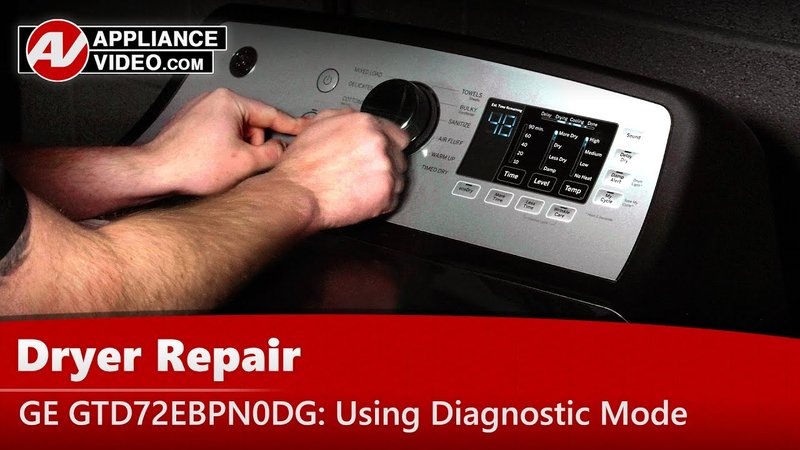
Imagine your dryer as a mini weather system, where everything needs to align just right to keep your clothes warm and dry. The HE error is like a rainy day – it can be disappointing but is also a sign that something needs your attention. By knowing what causes this error, you can take steps to ensure it doesn’t happen again, saving you time, energy, and the irritation of re-running loads.
Understanding the Causes of HE Error Code
First things first, let’s dive into what might cause this pesky HE error to appear. Think of your dryer like a complex orchestra, where every component must play its part perfectly. If one instrument is out of tune, the whole symphony can fall apart. Similarly, several factors can lead to the HE error, such as faulty heating elements, thermostat issues, or airflow obstructions.
One of the common culprits is a **faulty heating element**. The heating element is like the sun for your dryer, providing the necessary warmth to dry clothing. If it’s not functioning correctly, your dryer can’t reach the required temperature, leading to the HE error code. Testing the continuity of the heating element using a multimeter can help determine if this is the issue.
Another possibility is a problem with the **thermostat**. The thermostat acts like a diligent weather forecaster, ensuring the temperature stays within optimal ranges. When it fails, the dryer might think it’s warmer than it actually is, or vice versa, triggering the HE error. Replacing a faulty thermostat can rectify this problem.
Finally, consider **airflow issues**. If you imagine the dryer drum as an enclosed ecosystem, airflow is its lifeline. Clogged vents or lint filters can suffocate the system, preventing it from circulating warm air effectively. Regularly cleaning your dryer’s lint trap and ensuring the vent hose is clear can work wonders in maintaining proper airflow.
Steps to Prevent Future HE Errors
Now that you’re armed with the knowledge of what might cause an HE error, let’s explore how to prevent it from happening again. The key here is proactive maintenance and attention to detail. Just as you’d regularly water a plant to ensure its growth, your dryer thrives on regular care and maintenance.
Start by **establishing a routine for cleaning**. After every drying cycle, make it a habit to clean the lint filter. Think of it like brushing your teeth; it only takes a few moments but significantly impacts overall performance. Removing lint not only helps prevent HE errors but also increases the efficiency of your dryer, potentially lowering energy bills.
Next, **inspect the vent hose and exterior vent** every few months. Imagine the vent as a highway for hot, moist air to escape. If it’s clogged, it’s like a traffic jam, causing issues to back up into your dryer. Disconnect the vent hose and use a vacuum or a vent cleaning brush to remove any accumulated debris. Also, check the outside vent flap to ensure it opens freely.
Another essential step is to **periodically check the heating element and thermostat**. Consider this akin to a health check-up for your dryer. Depending on your dryer model, you might need to remove the back panel to access these components. If you’re unsure or uncomfortable doing this, it’s wise to contact a professional.
When to Call a Professional
While many dryer issues are manageable with a little DIY spirit, there are times when it’s best to call in the experts. If you’ve tried the basic checks and preventive measures but still encounter the HE error, it could indicate a more complex problem. Think of it like visiting a doctor – sometimes, you need professional advice to get a proper diagnosis.
Calling a technician is particularly advisable if **electrical issues or extensive internal repairs** are involved. Professionals have the right tools and expertise to safely and effectively diagnose and fix such problems, ensuring your dryer’s longevity and performance.
Additionally, if your dryer is showing signs of wear or other unfamiliar error codes, it might be nearing the end of its lifecycle. In such cases, consulting with a professional can help you decide if it’s time for repairs or replacement. They can provide guidance based on the dryer’s age, condition, and your household’s needs.
Remember, while DIY fixes can be rewarding, there’s no substitute for expert help when needed. It’s the safest way to prevent unexpected breakdowns and ensure your dryer keeps running smoothly.
In conclusion, preventing the GE dryer HE error code from recurring involves a mix of understanding potential issues, regular maintenance, and knowing when to call in a professional. By keeping your dryer in top condition, you avoid the frustrations of damp clothes and keep your laundry routines running efficiently. Happy drying!